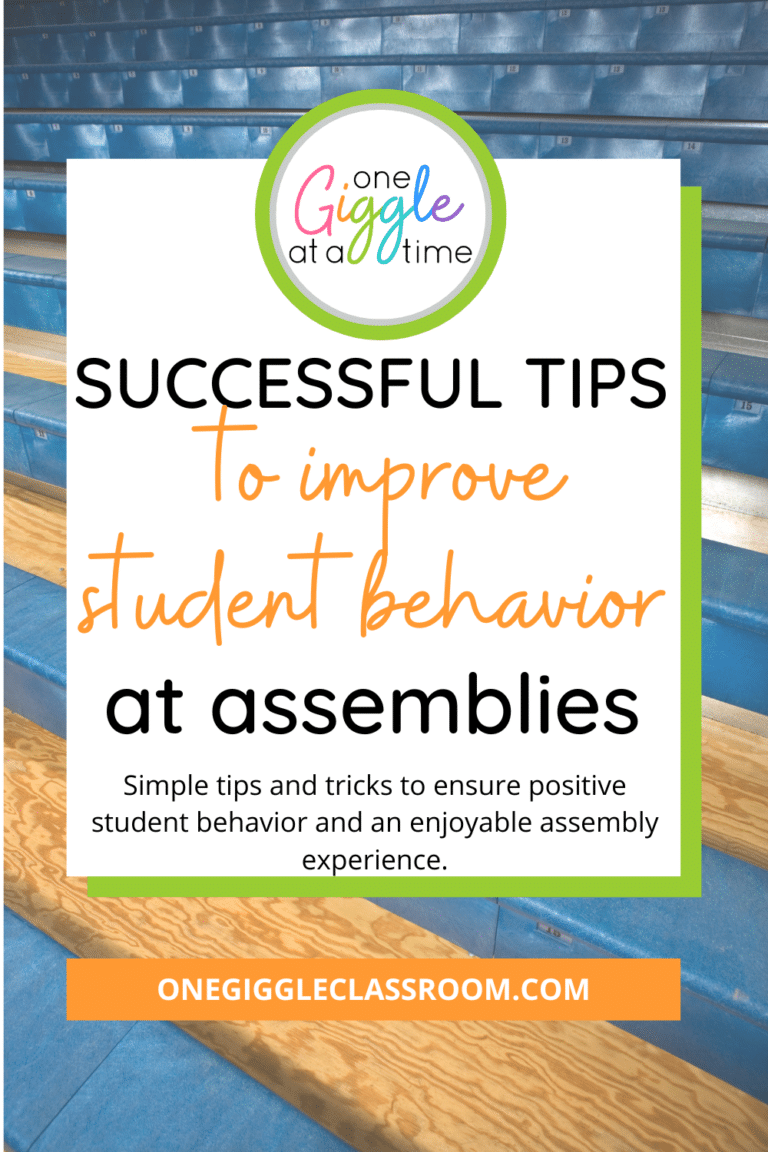
Teaching Good Sportsmanship in the Elementary Classroom in 10 Easy Steps
Share This:

Teaching good sportsmanship is not just about winning or losing; it’s about instilling values in children that they can carry with them throughout their lives. As elementary teachers, you play an important role in shaping how your students perceive competition and interact with their peers. You can foster the winning attitude of good sportsmanship in just 10 easy steps!
Understanding Good Sportsmanship
Good sportsmanship is an attitude of integrity, fairness, and kindness. It includes a variety of actions:
- Respecting opponents
- Playing by the rules
- Showing empathy
- Gracefully accepting both victory and defeat

Good sportsmanship is vital to create a positive and supportive classroom environment where every child feels valued and respected!
Classroom Examples
In the classroom, good sportsmanship can be shown in many different ways.
You might see a student helping a peer who is struggling to finish an assignment. Another student may celebrate a classmate’s success in finishing a book or running super fast on the playground (you know how important that is!). Another student may exhibit good sportsmanship by accepting constructive feedback with kindness.
Challenges of Teaching Good Sportsmanship to Students
Teaching good sportsmanship to young students does have its challenges.
First, children are naturally competitive and may struggle with accepting that the outcomes of an event do not always match their expectations. Young students are also still developing important social-emotional skills and learning how to regulate their emotions. Children may also lack positive examples of good sportsmanship.
Despite these challenges, you can be confident in your ability to teach your students how to show good sportsmanship by using these 10 easy steps!
10 EASY Steps to Teaching Good Sportsmanship
- Lead By Example
- Emphasize Effort Over Outcome
- Teach Empathy
- Highlight the Importance of Teamwork
- Practice Graciousness
- Discuss Fair Play
- Use Real-Life Examples
- Encourage Positive Communication
- Promote Self-Control
- Provide Opportunities to Reflect
1. Lead By Example
First, lead by example! As a teacher, your students are watching you all day long.
By consistently modeling good sportsmanship in your interactions with students and fellow teachers, you help your students see tangible ways this important character trait plays out in real life.

Your behavior sets the tone for the classroom culture you want to cultivate! Your actions speak louder than your words, and you may be the only positive example some students see.
2. Emphasize Effort Over Outcome
Next, shift the focus in your classroom from winning to personal growth and effort. This shift empowers students to take ownership of their progress.
Encourage students to set personal goals, celebrate their successes (no matter how small they seem!), and persevere through setbacks.

As students begin to recognize the importance of their efforts, they learn life lessons of self-improvement and resiliency!
3. Teach Empathy
Teaching empathy is another important piece of teaching students good sportsmanship.
Students need to understand the feelings and perspectives of others as they work together in opposition to their peers.

Use discussions, role-playing, and children’s books to help students recognize the impact their actions have on those around them.
As you foster empathy in your classroom, you help create a sense of community among your students!
4. Highlight the Importance of Teamwork
The familiar phrase “Teamwork makes the dream work!” is more than true when it comes to exhibiting good sportsmanship.

Teach your students the value of collaboration, cooperation, and shared responsibility. Use team-building activities, group assignments, and fun brain-building toys to teach students to appreciate the contributions of their peers.
Teamwork fosters a spirit of mutual support and respect within your classroom!
5. Practice Graciousness
Next, teach students to practice graciousness as they acknowledge and congratulate their opponents, regardless of the outcome. Winning with humility and losing with dignity are essential parts of good sportsmanship.

6. Discuss Fair Play
You’ll also want to teach your students to respect the rules and their peers when teaching about good sportsmanship.

You can reinforce fair play by emphasizing the consequences of cheating, disrespect, and unsportsmanlike behavior.
Understanding fair play helps students go on to make other ethical decisions in their lives.
7. Use Real-Life Examples
Include examples of professional athletes, historical figures, and everyday heroes to help students understand what good sportsmanship looks like in real life.
Discuss ways these individuals positively impacted their communities as they chose to listen and speak graciously, respond with empathy, and follow the rules.
8. Encourage Positive Communication
Also, encourage your students to communicate positively with others.
In the classroom, this looks like:
- Active listening
- Using respectful language
- Providing constructive feedback
As students practice positive communication, they will be able to resolve more conflicts on their own and build positive relationships that benefit your entire classroom environment!
9. Promote Self-Control
Big feelings can arise in competition, and students need to learn how to control them.

Teach your students strategies for emotional regulation like breathing exercises and positive self-talk so they can demonstrate self-control the next time their feelings are on the rise.
10. Provide Opportunities to Reflect
Finally, provide ample opportunities for students to reflect. Reflection is a powerful tool for self-awareness and personal growth.
As you encourage your students to think about their behaviors, attitudes, and choices during group activities and assignments, you promote accountability. You create a safe space for students to evaluate the quality of their sportsmanship and consider ways to improve the next time.
Resources for Teaching Good Sportsmanship
Use simple, low-prep resources to help you teach your students about good sportsmanship!
This Good Sportsmanship social skills story includes a relatable and engaging social skills story to help students understand the importance of sportsmanship and highly engaging activities to reinforce their learning.
You can also grab this one in the Community Building Social Skills Bundle! The bundle includes social skills stories and activities for all of the following social-emotional learning topics:
- Personal Space
- Tattling vs Reporting
- Using Good Manners
- Good Sportsmanship
- Turn Taking
- Accepting Differences

Teaching good sportsmanship goes far beyond your classroom walls; it’s about equipping your students with essential life skills that will continue to serve them well into their adult lives! By implementing these strategies and using engaging resources, you can nurture empathy, respect, and graciousness in your students.
Let me know if you have any questions about anything you see here. Don’t forget to pin this post to refer to it later!

Other posts you may enjoy:
The Importance of Using Emotional Regulation Strategies in the Classroom
5 Reasons Why Daily Journal Writing Should be a Part of Every Elementary Classroom
5 EASY Techniques to Teach Fairness and Respect While Building a Positive Classroom Community
GUIDE STUDENTS IN DEVELOPING A GROWTH MINDSET WITH THESE
Free Growth Mindset Punch Cards
The perfect way to start meaningful habits and conversations with your students!


Diane Romo
Thank you for being here! I love sharing ideas with other teachers! If you are looking to enhance your teaching and build a positive classroom community, you have come to the right place!













